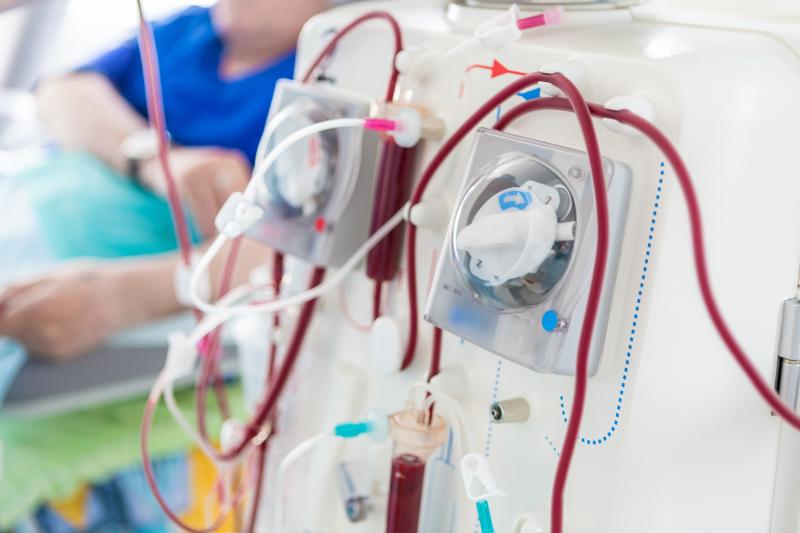 Long waiting times, cost and inconvenience of haemodialysis are off-putting to many patients.
Long waiting times, cost and inconvenience of haemodialysis are off-putting to many patients.Both the geriatric nutritional risk index (GNRI) and creatinine (Cr) index can comparably predict mortality risk in older adults receiving haemodialysis, a recent study has shown.
Drawing from the Japan Dialysis Outcomes and Practice Patterns Study, researchers enrolled 3,536 dialysis patients (median age, 66 years; 65.0 percent male). The primary outcome measure of all-cause mortality was measured according to the primary exposure variables of GNRI and Cr index.
Over a median follow-up of 2.2 years, 4,141 all-cause deaths and 151 mortalities from cardiovascular diseases were reported. Nonadjusted Kaplan-Meier curves showed that those with lower GNRI (log-rank p<0.05) and lower Cr index (log-rank p<0.05) had higher incidence rates of all-cause mortalities than comparators with higher index values. A similar trend was reported for cardiovascular deaths.
Cox proportional hazards risk analysis found that a lower GNRI was a significant risk factor for all-cause mortality (Q1 vs Q4: hazard ratio [HR], 2.21, 95 percent confidence interval [CI], 1.61–3.03). This analysis had been adjusted for potential confounders such as age, sex, comorbidities, dialysis vintage and residual kidney function.
Cr index showed the same pattern: lower categories increased the risk of all-cause mortality (Q1 vs Q4: HR, 3.49, 95 percent CI, 2.08–5.85). Both GNRI and the Cr index also had similar c-statistics for the prediction of all-cause mortality (0.749 vs 0.752).
“Because the baseline values that determined a lower GNRI or Cr index category were almost comparable, the GNRI may be more useful than the Cr index for the prediction of mortality in haemodialysis patients because it is a simpler surrogate of nutritional status,” the researchers said.